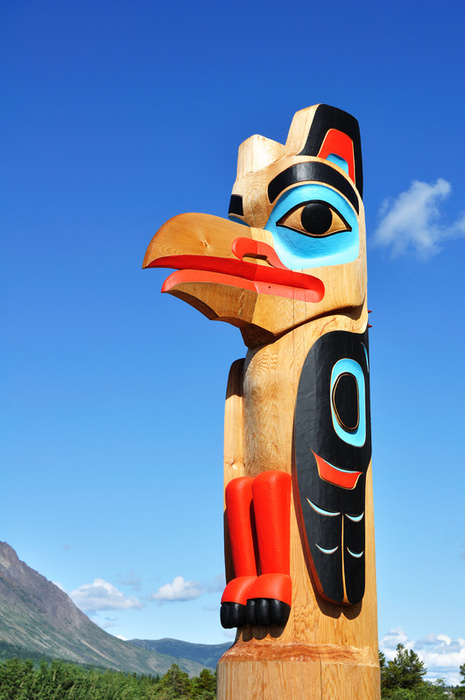
Woodcarving can be learned by almost anyone
Woodcarving (xyloglyphy) is working wood via the use of a knife, a chisel and/or a mallet. The outcome is sculptural ornamentation of a wooden object. A totem pole is a good example of what can be achieved when sculpting wood. Anyone who can learn woodcarving will discover a hobby that lasts a lifetime. Almost anyone can take up this hobby, although this is not a craft for young children because it involves using sharp instruments.
If your interest is piqued, you need to know which tools are required to undertake this craft and how to use them. Sculpting wood requires using a carving knife, which cuts smooth wood and pares; a coping saw, which cuts off chunks; a gouge, which is a curved cutting edge tool that carves hollows, rounds and makes sweeping curve; a small and large chisel for cleaning up flat surfaces and making lines; a V-tool, which emphasizes lines when doing flat work, and a veiner, which has a U-shaped cutting edge and makes deep gouges.
Also needed is a whittling knife and sharpening tools because the equipment doesn’t preform well if it is dull.
Purpose of the tools
A chisel has a straight cutting edge. If you hear the phrase ‘skew chisel,’ this refers to a chisel with an edge situated at an angle or ‘skew’ relative tot he sides of the blade.
~
A V-tool is used to make decorating cuts and for outlining. Some call it the carver’s pencil. It has a V-shaped cutting edge.
There are various types of chisels used in this craft. As you progress, you can add them to your sculpting arsenal.
Wood
The wood artisan knows his material. Wood is not uniformly strong in every direction and the carver is aware of this. Wood is anisotropic, which means directionally dependent. The direction wood is the strongest is call the ‘grain,’ which may be wavy, interlocked, straight, fiddleback or a number of other types. It is far easier to split a piece along the grain than against it.
Styles
Whittling is a form of sculpting, done with a carving knife. The final result is not a smooth surface but one featuring knife strokes.
Another technique is ‘carving in the round.’ This means the piece is pared all the way around. Surface and texture of the finished product is life-like. Relief carvings, another style, feature flat backs and are three dimension. Chip carving requires chip knives used to remove certain pieces or chips of wood.
What kind of wood should I use?
Many sculptors choose basswood because it is quite soft and has very little grain. It is white. Another white wood, Aspen, is also popular for this craft. It is soft but stronger than basswood. Black walnut is a good choice but it is more expensive than the others. It is heavy and hard-wearing.
Butternut is darker than aspen and basswood. It is sometimes called ‘white walnut’ because it is much lighter in color than black walnut. It is lightweight in comparison to black walnut and is resistant to most rots. It is soft.
Oak is strong and durable. It is not susceptible to most insects and rots and features beautiful grain.
There are master wood sculptors who teach classes. It would benefit you to enroll in a course if you are serious about pursuing this craft. Additionally, there is a multitude of information online regarding wood carving and the tools of the trade.
